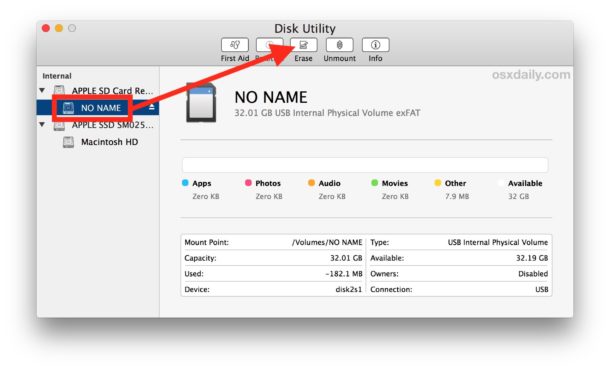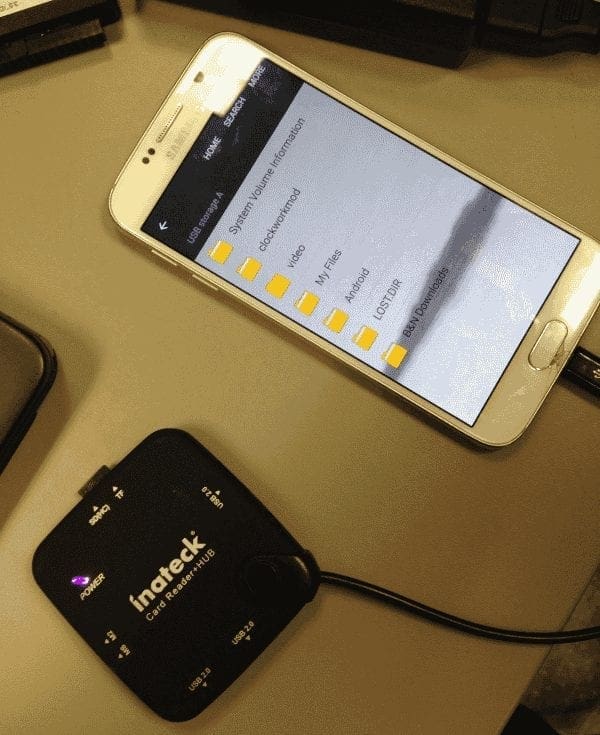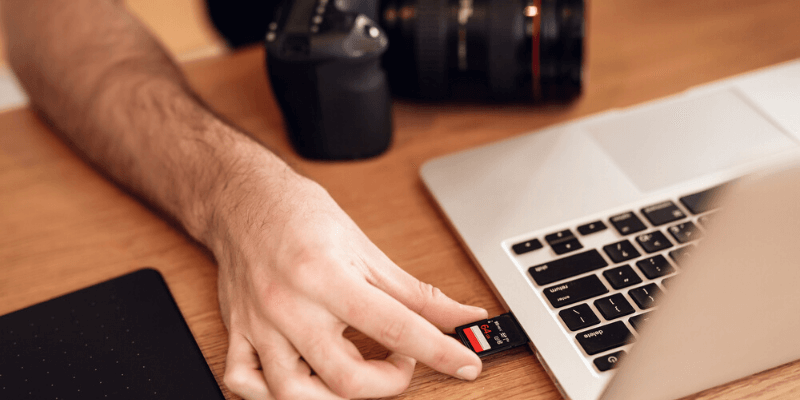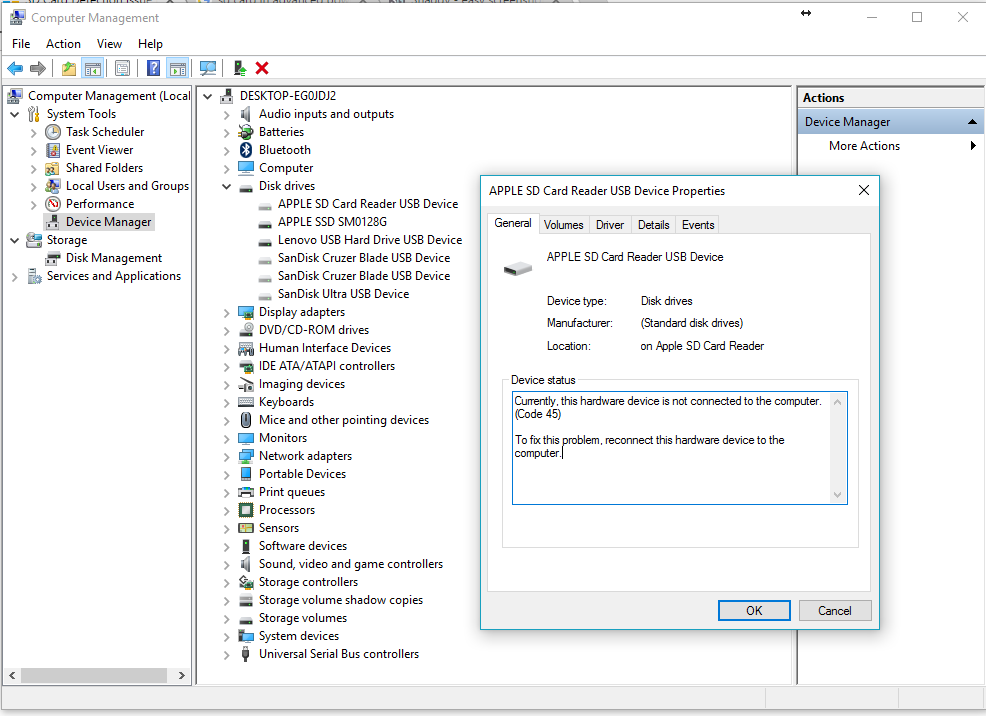Mac Sd Slot Not Reading
- Mac Sd Slot Not Reading Glasses
- Micro Sd Slot
- Mac Sd Slot Not Reading Glasses
- Sd Slot Not Working
- What Is Sd Slot
What is SD?
SD describes devices that conform to SD standards for non-volatile memory cards. See the SD Association website for details.
Check your Finder desktop and sidebar preferences. On Mac, you can choose to show connected. SOLVED - SD Card Reader Not Working on macOS High Sierra iMac (Retina 5K, 27-inch, Late 2015) After macOS update, SD Card Stopped Working #HarjinderSidhu. If your Mac won't read SD card or SD card is not mounting on Mac, you can try to fix the unreadable SD card with First Aid. Step 1: Go to Applications/Utilities/Disk Utility. Step 2: Select the SD card from the left side bar. Step 3: Click First Aid. If SD card is not showing up in Mac Disk Utility, please ask a professional for help. Sep 12, 2016 I installed genuine copy of windows in my MacBook air. I am having issue with the SD card slot. When the computer goes in sleep and awakens back, the SD card slot stops working. SD card reader doesn't show even in hardware list at that time. I tried everything but couldn't get it fixed until rebooted. To fix this, follow these steps: Press Win+R and type 'Control Panel', then select the 'Device Manager'. If computer wont read your SD card - try to update drivers. Now find your SD card and right-click on it.
Are there size limitations for the cards that can be inserted into the SD slot?
Yes. The SD card specification for a memory card is 32mm by 24mm by 2.1mm. You can also use thinner cards, such as MultiMediaCards (MMC). Avoid using cards that have a thickness greater than 2.1mm, as they might damage the SD card slot if you try to insert them.
Which SD card formats work in the SD card slot?
Cards that conform to the SD 1.x, 2.x, and 3.x standards should work. The SD card slot can use:
- Standard SD, 4MB to 2GB
- SDHC (Secure Digital High Capacity), 4GB to 32GB
- SDXC, 4GB to 2TB
- MMC (MultiMediaCards)
- UHS‑II, up to 2TB (iMac Pro only)
You can use a passive adapter like the one shown here to make MiniSD, MicroSD, and higher density formats like MiniSDHC and MicroSDHC conform to the width and thickness specifications listed above:
How fast can my Mac read or write to an SD card in the SD card slot?
Mac notebooks use the USB bus to communicate with the SD card slot. They have a maximum speed of up to 480Mbit/s. Mac desktops use the PCIe bus to communicate with the SD card slot. Desktops can transfer data at a faster rate.
Check the packaging that came with your SD media to determine the maximum transfer rate that your specific card uses.
To determine the maximum transfer speed of your Mac, you can use System Information. Choose Apple () menu > About This Mac and then click System Report.
If you use a Mac notebook:
- Select Hardware, then select USB.
- Select Internal Memory Card Reader and look for the Speed entry.
If you use a Mac desktop computer:
- Select Hardware, then select Card Reader.
- Look for the Link Speed entry. Computers that use the PCIe bus express their speed as GT/s.
Does the SD slot work with cards that exceed 32GB?
Yes. However, most media manufacturers preformat the media using common block-and-cluster sizes that don’t approach the theoretical limits of a given file system.
Most SD cards use the FAT32 file format, and preformatted FAT32 SD media is commonly available up to a capacity of 32GB. Media that exceeds 32GB usually uses the exFAT file system, while some smaller capacity cards use the FAT16 file format. Preformatted FAT16 media is generally available up to a capacity of 2GB.
If you use OS X Snow Leopard 10.6.5 or later, you can find out which file system you’re using:
- Insert the media into the SD card slot.
- Choose Apple menu > About This Mac.
- Click System Report.
- In the Hardware section, click Card Reader, and find the File System field.
Will the SD card slot work with SD cards that use the exFAT file system?
Yes. Any Mac that has an SD card slot and is running OS X 10.6.5 or later can use the exFAT file system.
exFAT is also supported in Boot Camp with Windows 7, 8.1, or 10 on any Mac made in 2011 or later with an SD card slot.
How do I insert media into the SD card slot?
When you insert the card, make sure that the metal contacts face down and point toward the computer. Don’t force media into the SD card slot, as this might cause damage.
How does my Mac use the media inserted into the SD card slot?
Your computer recognizes a card inserted into the SD card slot as a USB storage device. You can mount, read from, and write to the SD card just like you can with any other USB storage device.
I put the card in the slot, but it didn’t mount. What should I do?
Remove the card and insert it again. Sometimes the SD card won’t mount properly if you put it into the slot too slowly.
When I try to write content to the card, I get a 'cannot be modified' message. How can I fix this?
You see this message when you try to edit data on an SD card that’s locked. You need to use the lock slider to unlock the card before you can edit the data.
To eject the card, drag the icon that represents the card to the Trash. After the icon disappears from the desktop, you can remove the card from the computer. Adjust the lock slider tab to unlock the card, then reinsert the card into the slot. See the manufacturer’s instructions for the location of the slider tab.
Can I use Disk Utility to reformat an SD card?
You can use Disk Utility to partition and format an SD device as FAT32 (using the MS-DOS FAT setting) or Mac OS Extended. The Mac OS Extended format can be used only on Macintosh systems. Non-Apple systems won’t recognize cards formatted to Mac OS Extended.
You might have to format a card that’s larger than 32GB with exFAT if you want to use it with a digital camera, GPS, or another device. When in doubt, format the card in the device that you intend to use it with.
Can I install macOS on an SD storage device and use it as a startup volume?
Use Disk Utility to change the default partition table to GUID. Then format the card to use the Mac OS Extended file format.
How do I remove a card from the SD card slot?
Before you remove the card, allow any data transfer to SD media to complete. To eject the card, drag the icon that represents the card to the Trash. After the icon disappears from your desktop, you can remove the card from the slot.
Don't remove a card while your Mac is sleeping, as this could lead to data loss. Always wake your computer and eject the SD card before removing it from your Mac.
Can I use Secure Digital Input Output (SDIO) cards?
Can I use macOS to see the specifications for the interface hardware and media inserted in the SD card slot?
You can get information about the interface hardware and the media that you inserted in the slot from the System Information:
- Choose Apple menu > About This Mac.
- Click System Report.
- In the Hardware section of System Information, select USB.
- In the list of USB devices, select Internal Memory Card Reader to access information about the interface hardware and the media inserted into the SD card slot.
Can I use the SD card slot while running Windows using Boot Camp?
The SD card slot works with Boot Camp in all supported versions of Windows. You’ll need to download and install the Windows Support Software to use the SD card slot with Windows.
Learn more about using Windows on a Mac.
Can I use an SDXC card on my Mac with Windows?

You can use an SDXC card in Windows 7, Windows 8, and Windows 10 with these Mac computers:
- MacBook Pro (Early 2011 and later)
MacBook Pro models from 2016 and later don't have a built-in SD card slot. You can use a USB-C card reader, or a combination of a USB-C to USB Adapter and a USB card reader. - MacBook Air (Mid 2011 and later)
- Mac mini (Mid 2011 and later)
Mac mini (Mid 2010) doesn't support SDXC cards. - iMac (Mid 2011 and later)
iMac (Mid 2010) doesn't support SDXC cards.
Can I use an SD, SDHC, or SDXC card to install Windows on my Mac?
No. You can’t use SD, SDHC, or SDXC cards with Boot Camp to install Windows software on Mac computers.
This post covers 9 approaches in all to solve SD card not detected or SD card not showing up Windows 10 problem. Start from the top of the list and work your way down until you find the method that works for you.
| Workable Solutions | Step-by-step Troubleshooting |
|---|---|
| Fix 1. Try SD Card on Another Computer | You can connect your SD card to another computer, or alternatively, try another SD card...Full steps |
| Fix 2. Clean SD Card Reader | A dirty SD card or a dusty card reader will cause poor contact and make SD card not reading...Full steps |
| Fix 3. Change Drive Letter | If your SD card doesn't show up in Windows 10 File Explorer, check whether there is a drive letter...Full steps |
| Fix 4. Update SD Card Driver | Incorrect or outdated card reader driver can make the SD card unrecognized on your Windows 10...Full steps |
| Fix 5. Reinstall the Universal Serial Bus Controllers Driver | Uninstall and reinstall the Universal Serial Bus controllers driver can be an effective fix ...Full steps |
| More Tips to fix SD card not detected | Run hardware and devices troubleshooter, disable & enable SD card reader, repair corrupted SD card...Full steps |
SD card reader not working Windows 10. How do I view an SD card on my computer?
'Trying to import some pictures from a Nikon camera's SD card to my computer, to my surprise, the computer won't read SD card and the SD card not detected Windows 10 after many attempts. The SD card not reading Windows 10. How to access the SD card on Windows 10. Any ideas?'
Why SD Card Not Detected Windows 10
Why Windows 10 won't read SD card? Usually, you can put a micro SD card into a card reader so that you can connect the SD card to a computer and open the SD card on PC. However, lots of users reported the SD card not showing up Windows 10. How does it come that Windows 10 not reading SD card? Many factors would bring about such consequences. For example:
- SD card reader not working Windows 10
- SD card corrupted, broken, or damaged
- Hard driver issues, bad sectors
- SD card driver missing
- Virus infection
How to Fix SD Card Not Detected or SD Card Not Showing Up Windows 10
Therefore, how to open SD card on Windows 10, 8, or 7 if the SD card not detected or the SD card not showing up as a removable disk? You can find solutions here to work out the problem and try every means to make the computer recognize the memory card properly.
Below is a list of the useful fixes that have worked for other Windows users to solve SD card reader not working on Windows 10 or Windows 10 won't read SD card problem. Try them one by one until you find the fix that works for you.
Fix 1. Try SD Card on Another Computer
Sometimes, when the SD card not showing up on Windows 10, it is the computer interface problem rather than the SD card. In this case, connect your SD card to another computer. Alternatively, use another SD card to check the interface. This is the first way you can take to fix SD card not detected problem.
Fix 2. SD Card Reader Not Working Windows 10? Clean SD Card and Reader
One common cause of Windows 10 can't read SD card or SD card reader not working problem is very simple: a dirty SD card or a dusty SD card reader. Either can lead to poor contact between card and reader, and make Windows 10 not reading SD card.
So, give your card a clean, and remove any dust from the reader, then try the card again. Or you can find another PC and test the SD card in that computer, to see if it works. If your SD card still not reading on Windows 10, move onto the following methods.
Fix 3. Check SD Card and Change Drive Letter in Disk Management
If your SD card not showing up in Windows 10 file system, you can check whether there is a drive letter for the SD card. If not, follow the steps below to add a drive letter:
Step 1. Right-click the Start button and select 'Disk Management'.
Step 2. In Disk Management, your SD card will appear as a removable disk. Check if it has a drive letter like D or E.
Step 3. If not, right-click the SD card and select 'Change Drive Letter and Paths'.
Step 4. Click 'Add' and select a drive letter, then click 'OK'. Your SD card would appear in the File Explorer along with local disks.
Fix 4. Update SD Card Driver Windows 10 in Device Manager
A faulty, incorrect, or outdated card reader driver is the main reason for the SD card not detected on Windows 10. Therefore, check if the drivers are in good health.
Step 1. Type Control Panel in the search box next to the Windows menu in Windows 10 and open 'Control Panel'.
Step 2. Navigate to 'Device Manager' and open it.
Step 3. Right-click on the SD card and select 'Properties', and under the 'Driver'tab, click on 'Update driver'. You can proceed with 'Search automatically for updated driver software'.
Fix 5. Reinstall the Universal Serial Bus Controllers Driver
If the issue persists, then follow the below method. Follow the below steps to uninstall the Universal Serial Bus controllers driver.
Step 1. Press Windows + R keys on the Keyboard. Type devmgmt.msc in the Open text box.
Step 2. Expand 'Universal Serial Bus controllers' from Device Manager.
Step 3. Right-click on the drivers and select 'Uninstall'. Click on OK on Confirm device uninstall prompt.
Step 4. Restart the computer, and the drivers will get automatically installed on your Windows 10.
Fix 6. Diagnose SD Card Issues and Troubleshooting
Step 1. Open 'Control Panel'as instructed in the first method, and select 'Troubleshooting'.
Step 2. Select 'Hardware and Sound', and next 'Hardware and Devices'.
Step 3. Follow the on-screen instruction and wait until the problem solved.
Fix 7. Disable and Enable SD Card Reader
If your SD card is still not showing up on your PC and you still don't know how to open SD card on Windows 10, try this method.
Step 1. Open Disk Manager on your computer.
Step 2. Expand the category 'Memory Technology Devices'. Double-click the card reader to open, like Realtek Card Reader Driver.
Step 3. On the pop-up windows, click 'Driver' and then click 'Disable Device'.
Step 4. When prompted to disable the device, click 'Yes'.
Step 5. Double-click the card reader again to open the 'Properties' windows. Click 'Enable Device' to re-enable the device.
Fix 8. Repair Corrupted SD Card
If all of the above methods above fail to make the computer read the SD card, you should now prepare for the worst that this memory card has developed bad sectors on it, which may cause corruption.
There is a piece of easy-to-use yet powerful corrupted sd card repair tool that will help you fix damaged SD card. It's EaseUS Partition Master. Users can take advantage of its check partition feature to repair a corrupted SD card so that the computer can read the card again.
Now, download this reliable partition manager and repair the corrupted SD card to open in on Windows 10 with a few clicks.
Step 1. Open EaseUS Partition Master on your computer. Then locate the disk, right-click the partition you want to check, and choose 'Check File System'.
Step 2. In the Check File System window, keep the 'Try to fix errors if found' option selected and click 'Start'.
Step 3. The software will begin checking your partition file system on your disk. When it has completed, click 'Finish'.
Except for checking file system and repairing SD card, EaseUS Partition Master provides more one-stop disk partition features, such as resize/move partitions to solve low disk space issue, clone disk, merge partitions, create/delete/format partition, wipe data, disk/partition conversion (e.g., convert FAT32 to NTFS), and so on.
Fix 9. Recover Data and Format SD Card
When you perform the formatting of the SD card on your phone, it is very likely that something will go wrong and the formatting fails. Then, the file system of your SD card is corrupted and it won't be detected and show up on your computer.
If your SD card is still not reading or showing up after fixing using the method above, we advise your use EaseUS data recovery software to recover the files on the SD card at first and then format the SD card for reuse.
1. Recover data from SD card
Step 1. Run SD card recovery software and scan the card.
Launch EaseUS Data Recovery Wizard on your PC and select your SD card. Then click 'Scan' to start finding lost data on your SD card.
Step 2. Check found SD card data.
After the scanning process, you can click 'Filter' to quickly find wanted files.
Step 3. Restore SD card data.
You can check and preview found files by double-clicking each one of them. Then click Recover to save found SD card files to a secure location on your PC or external storage.
2. Format the SD card
Mac Sd Slot Not Reading Glasses
You can continue using EaseUS partition management software to format your SD card with a few clicks.
Step 1: Open EaseUS Partition Master. Find your SD card and right-click the partition you want to format and choose 'Format'.
Step 2: Set a new partition label, file system (NTFS/FAT32/EXT2/EXT3), and cluster size to the selected partition, then click 'OK'.
Step 3: Click 'OK' on the pop-up window to continue.
Step 4: Click the 'Execute Operation' button on the toolbar, then click 'Apply' to start formatting your SD card.
Micro Sd Slot
Or you can use format the SD card with Disk Management.
Step 1. Right-click the Start button and then click Disk Management.

Step 2. Right-click on the SD card partition and select 'Format'.

Step 3. On the format window, check the box of Perform a quick format, and in the same way, you need to choose a file system and allocation unit size.
Step 4. Click 'OK'.
Final Verdict
As mentioned before, if your computer or SD card gets infected with a virus, you might not be able to find and access the SD card on Windows 10. Thus, run antivirus software to clean up the virus or malware. And upgrade your antivirus software in time.
We hope these fixes help you fix SD card not detected problem in Windows 10. If you still have any questions, feel free to contact our technical support team via email or live chat.
SD Card Not Detected Windows 10 FAQs
Here are three questions related to the SD card not detected Windows 10. If you also have any of these problems, you can find the methods here.
Why is my SD card not showing up on my PC?
- Connection issue. The SD card is not well connected to the computer because of a damaged USB port, adapter, card reader, etc.
- SD card is locked and write-protected
- Improper operation, such as remove SD from the device while it is running
- SD card drive letter is lost
- SD card is corrupted/damaged
Mac Sd Slot Not Reading Glasses
How do I get Windows 10 to recognize my SD card?
How to open SD card on Windows 10 by updating SD card driver:
Step 1. Right-click 'This PC' > choose 'Manage' > open 'Device Manager'.

Step 2. Right-click on the SD card and select 'Properties', and under the 'Driver' tab, click on 'Update driver'.
Step 3. Click 'Search automatically for updated driver software' and do as required to finish the process.
How can I fix my micro SD card not detected?
To fix SD card not detected or SD card not showing up issue, use the following tips:
- Try SD card on another device
- Check SD card in Disk Management
- Remove SD card write protection
- Reinstall/update SD card driver
- Enable SD card reader
- Run hardware and device troubleshooter
- Repair corrupted SD card
SD card reader not working Windows 10, how to fix?
The reasons for the SD card reader not working issue are various, but the most possible factors are a poor connection between SD card and SD card reader, outdated SD card driver, and SD card infected with a virus.
- Check the hardware issues: check SD card reader, USB cable, SD card, USB port
- Run Windows hardware devices troubleshooter
- Change SD card drive letter
- Update SD card reader driver
- Clean up virus or malware
How do I install SD card drivers?
How to install an SD card driver on Windows 10:
Use the installation CD or driver download for the SD card reader if it comes with one. Open the file, then click 'Next' a few times to get through the installation wizard. Click 'Finish' to complete it. Restart the computer and your SD card should be recognized. If this doesn’t work, continue to the next steps.
Step 1. Click 'Start' > 'Control Panel' >'Add Hardware Wizard' > 'Next' to start the wizard. Windows will automatically scan your computer to search for any new or improperly installed hardware devices. If the SD card reader is found, select it and click 'Next' until installation is complete.
Step 2. Choose 'Yes, I have already connected the hardware' if the SD card reader is not automatically recognized. Then, click 'Next.'
Step 3. In the 'Installed Hardware' list, choose 'Add a New Hardware Device.' Then, choose 'Install the hardware that I manually select from a list (Advanced)' and click 'Next.'
Step 4. Choose 'PCMCIA and Flash memory devices' or 'USB Mass Storage Device' depending on the type of SD card reader you are using.
Sd Slot Not Working

What Is Sd Slot
Step 5. Select the right SD card reader driver or choose 'Browse' to go to the installation wizard for the SD card driver. Follow the on-screen instructions to finish the installation process.